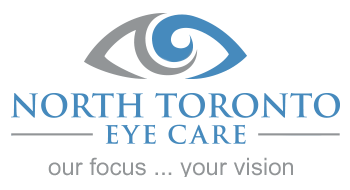Rosacea is a chronic, inflammatory skin condition that affects the blood vessels and sebaceous (oil-producing) glands of the face (forehead, cheeks, nose, and chin). The most visible symptoms of rosacea are facial flushing and pimple-like bumps, which makes this condition easily confused with acne. However, with acne, it is the hair follicles that become clogged and inflamed. It is estimated that 1 in 10 people have rosacea and it typically develops in adults between 30 and 50 years old. Also, women and those with fair skin are more likely to be affected. There are four subtypes of rosacea, and many people can have more than one subtype simultaneously. These subtypes are:
Subtype 1: Erthematotelangiectatic – facial flushing due to the growth of many tiny, superficial, tortuous blood vessels called telangiectasis
Subtype 2: Papulopustular – pimple-like bumps
Subtype 3: Phymatous – thickened, bumpy skin, which can affect the nose in particular, called rhinophyma
Subtype 4: Ocular – dry eyes or other ocular discomfort
The cause of rosacea is still unknown, however, it has been associated with genetic and environmental factors, immune system dysfunction, and inflammatory reaction to microorganisms. Rosacea is chronic and tends to have bouts of remissions and relapses. Certain triggers that may cause relapses or worsening symptoms include:
- Extreme temperatures (e.g. cold weather, hot baths)
- Sunlight
- Intense exercise (e.g. running)
- Stress
- Certain foods and drinks (e.g. spicy foods, hot beverages, alcohol)
- Certain cosmetic products
The diagnosis of rosacea is one of exclusion. There are no laboratory or histopathlogy tests that can be done to confirm rosacea, and biopsies are only done to rule out other skin conditions. A diagnosis of rosacea is based on your symptoms and a physical examination of your skin.
About 20% of those with rosacea do not have easily visible signs because they only have ocular rosacea, in which their eyes are affected before their skin is. More than 50% of those with rosacea will have ocular rosacea concurrently. When you have ocular rosacea, your eyes may feel dry, gritty, sandy, burning sensations, and you may have increased occurrences of styes, chalazia, and red eyes. These symptoms are caused by the inflammation of the eyelid margins; tiny telangiectatic vessels can often be found on the lid margins, but only eye doctors have the right equipment to view them. As a result of this inflammation, ocular rosacea is commonly associated with meibomian gland dysfunction (MGD) and overgrowth of microorganisms, called Demodex. Meibomian glands are naturally found within our eyelids and produce lipids that are secreted to protect our eyes. In MGD, these important glands start to clog, and without the lipids they produce, the tears that coat our eyes will evaporate too quickly, and may cause us to experience discomfort that can range from fluctuating vision to eye pain to recurring styes.
Demodex mites are naturally found in our skin, and are often found in large quantities in those with rosacea, but can also be found those without rosacea. If this happens, you will find that your eyes are irritated just like everyone else with dry eyes, however, your eye doctor will be able to see signs of an overgrowth of these mites when they look at your eyelashes. To address this, tea tree oil to clean your eyelids will be advised.
Treatment for ocular rosacea depends on its severity. If your case is mild to moderate, your doctor may have you do hot compresses to help unclog meibomian glands, eyelid margin cleaning, and use artificial tears to keep your eyes lubricated. For moderate to severe cases, along with the previously mentioned treatments, your doctor may prescribe oral tetracyclines for antibacterial and anti-inflammatory purposes.
Another option to address the clogged meibomian glands and inflammation of your eyelid margins is to do intense pulsed light (IPL) therapy. IPL therapy was initially designed to help treat skin rosacea, but an ophthalmologist found that not only did his patients’ skin rosacea improve, their ocular rosacea did as well. This therapy uses a Xenon flashlamp (not a laser) that emits certain wavelengths of light to help heat and unclog meibomian glands, kill microorganisms, and allows telangiectatic vessels to close off and stop growing. To find out which treatments are best suited for your ocular rosacea, speak to your eye doctor.
